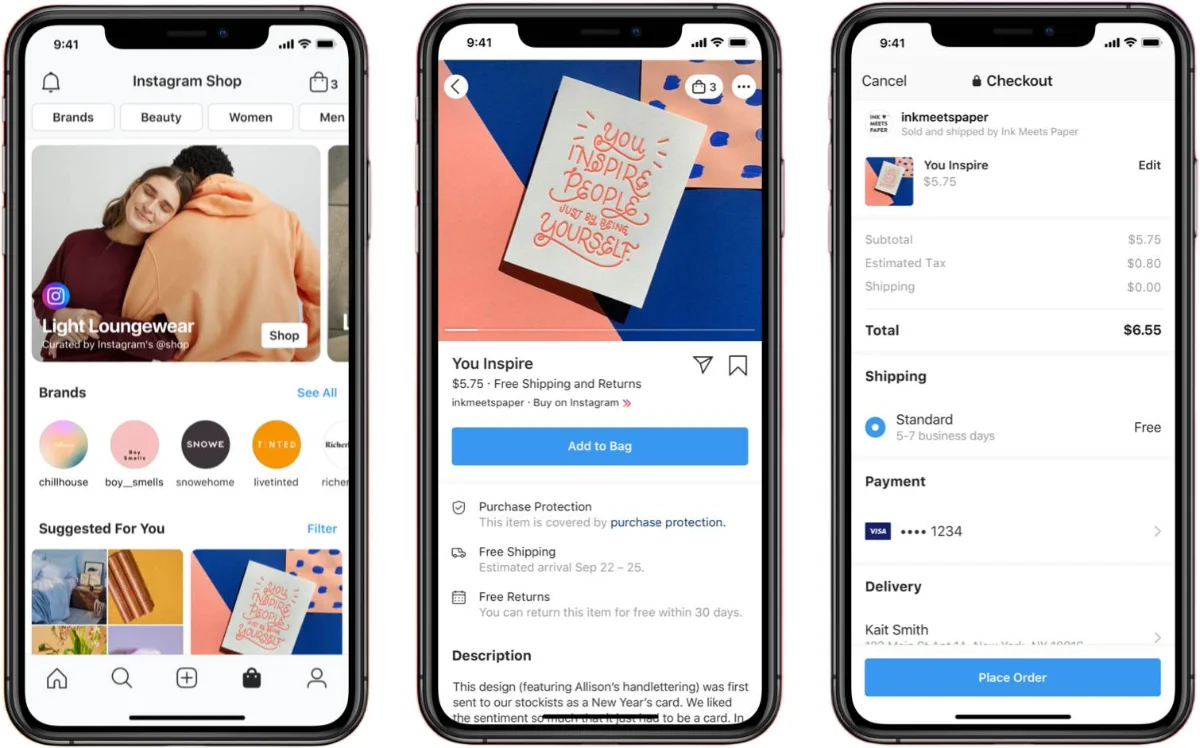The E-commerce Blog

Leveraging Social Media Platforms for Direct Sales
The Rise of Social Commerce
Social commerce has transformed the way consumers discover, engage with, and purchase products. Brands can now sell directly to consumers on social media apps. This is thanks to shopping features on platforms like Instagram, Facebook, TikTok, and Pinterest. This change connects social media and online shopping. It creates a smooth shopping experience.
For businesses, leveraging social commerce strategies is no longer an option but a necessity. Consumers are turning to social platforms not just for entertainment. It is also for product discovery, peer reviews, and instant purchases. Brands that use social media for selling can improve customer relationships. They can also boost engagement and increase sales more effectively.
This guide covers key online retail trends, top strategies for social commerce, and ways businesses can boost their social media presence to drive direct sales.
Understanding Social Commerce

What is Social Commerce?
Social commerce refers to the buying and selling of products directly within social media platforms. Social commerce is different from traditional e-commerce. In social commerce, users can browse, interact, and buy products within the app. They don’t have to go to another website.
Social commerce is not just a trend but a shift in consumer behaviour. Shoppers now expect instant access to products while engaging with social content. As a result, brands must ensure that their products are discoverable and easily shoppable within these platforms.
The Growth of Social Commerce
- The global social commerce market is expected to reach £1.2 trillion by 2025.
- 74% of consumers rely on social media for purchasing decisions.
- Facebook and Instagram account for nearly 60% of total social commerce sales.
- TikTok Shop is rapidly growing, with Gen Z and Millennials driving purchases.
- Pinterest has seen a 35% increase in product searches year over year.
- Over 40% of small businesses now use social commerce as a primary sales channel.
Businesses that grow quickly must adapt. If they don’t, they risk losing market share to competitors who use social commerce well.
Key Social Commerce Platforms
1. Facebook Shops
Facebook remains one of the strongest platforms for social media selling. The platform offers businesses the ability to:
- Set up Facebook Shops for seamless product browsing.
- Use Facebook Live Shopping to engage audiences in real time.
- Leverage Facebook Marketplace for peer-to-peer and business-to-consumer transactions.
- Run targeted ad campaigns to promote product discovery.

2. Instagram Shopping
Instagram’s visual-first approach makes it ideal for brands looking to sell through engaging content. Instagram Shopping enables businesses to:
- Tag products directly in posts and Stories.
- Use Shoppable Reels for interactive video commerce.
- Drive purchases through in-app checkout.
- Implement user-generated content (UGC) to build trust.
3. TikTok Shop
TikTok has taken social commerce by storm with its short-form, viral video format. Businesses can:
- Sell through TikTok Shop with integrated checkout.
- Use Live Shopping to engage with audiences in real time.
- Partner with influencers and creators for product promotions.
- Leverage Hashtag Challenges to boost engagement.
4. Pinterest Shopping
Pinterest is a powerful platform for discovery-based shopping. Brands can:
- Enable Product Pins to showcase their catalogue.
- Use Pinterest Ads for targeted promotions.
- Create shoppable Idea Pins to engage users visually.
- Leverage trending searches to optimise content.
5. YouTube Shopping
YouTube’s integrated shopping features allow brands to:
- Tag products in videos for direct purchases.
- Host live shopping events for real-time sales.
- Use YouTube Shorts to promote trending products.
- Integrate affiliate marketing links for added revenue streams.
Effective Social Commerce Strategies
1. Optimise Your Social Storefront
A well-organised and visually appealing social shop increases conversions. Key elements include:
- High-quality images and videos showcasing products.
- Concise, informative product descriptions.
- Customer reviews and testimonials to build trust.
- Seamless checkout experience with minimal steps.
- Consistent branding across all social media platforms.
2. Leverage Influencer Marketing
Influencers play a crucial role in social commerce by building credibility and expanding brand reach. Effective influencer collaboration strategies include:
- Affiliate marketing where influencers earn a commission on sales.
- Live shopping collaborations to promote limited-time offers.
- Sponsored content featuring product demos and reviews.
- Exclusive influencer discount codes to drive traffic.
3. Engage with Live Shopping
Live shopping has gained massive popularity, particularly on TikTok, Instagram, and Facebook. Brands can use live shopping to:
- Showcase product demonstrations in real time.
- Offer exclusive discounts to live viewers.
- Answer customer queries instantly, reducing purchase hesitation.
- Create urgency with limited-time offers.
4. Use Social Proof and UGC (User-Generated Content)
Social proof is one of the most powerful conversion tools in e-commerce. Effective UGC strategies include:
- Encouraging customers to share photos and reviews using a branded hashtag.
- Reposting authentic customer testimonials on Stories and feeds.
- Creating TikTok and Instagram Reels featuring satisfied customers.
- Launching social media contests to encourage UGC.
5. Implement AI and Chatbots for Personalisation
AI-driven chatbots enhance customer interactions and personalisation. Brands can:
- Use chatbots for instant customer support.
- Provide personalised product recommendations based on browsing history.
- Automate order tracking and post-purchase engagement.
- Analyse customer preferences to optimise marketing efforts.
Future Trends in Social Commerce
1. Expansion of AI-Powered Shopping Experiences
AI will play a larger role in social commerce through:
- AI-driven chatbots providing personalised product recommendations.
- Virtual try-on experiences powered by augmented reality.
- Predictive analytics to offer tailored discounts and promotions.
- Voice-powered search features for hands-free shopping.
2. Rise of Blockchain and NFTs in Social Commerce
Web3 innovations will revolutionise e-commerce by:
- Introducing NFT-based product ownership.
- Enabling blockchain-powered transparent transactions.
- Creating exclusive digital shopping experiences in the metaverse.
- Smart contracts for secure, automated transactions.
3. Integration of 5G for Seamless Shopping
Faster internet speeds will enhance:
- Real-time video shopping experiences.
- High-resolution product imagery without lag.
- Improved AI-driven recommendations in social commerce.
How Businesses Can Stay Ahead
Social commerce is rapidly reshaping the online retail landscape. To stay ahead, businesses must:
- Optimise social storefronts for seamless shopping experiences.
- Engage with influencers and user-generated content to build trust.
- Leverage livestream shopping, AI, and personalised recommendations.
- Run targeted ads and exclusive promotions to boost sales.
- Stay updated with emerging trends like AI, blockchain, and 5G.
Brands can use smart social commerce strategies to join the rising digital shopping world. This helps them engage customers better and achieve lasting success in online retail.









